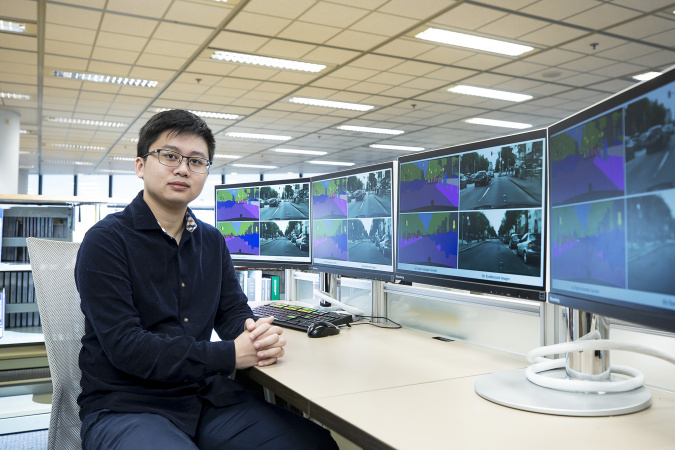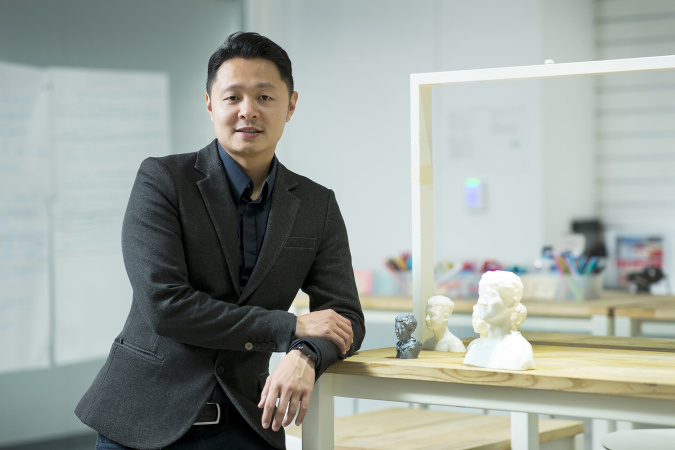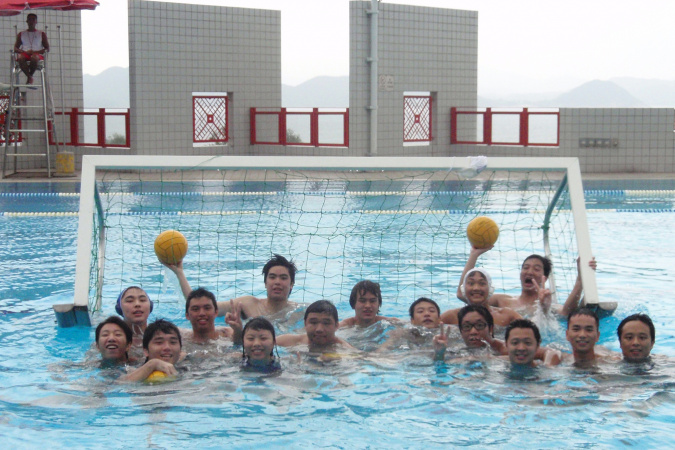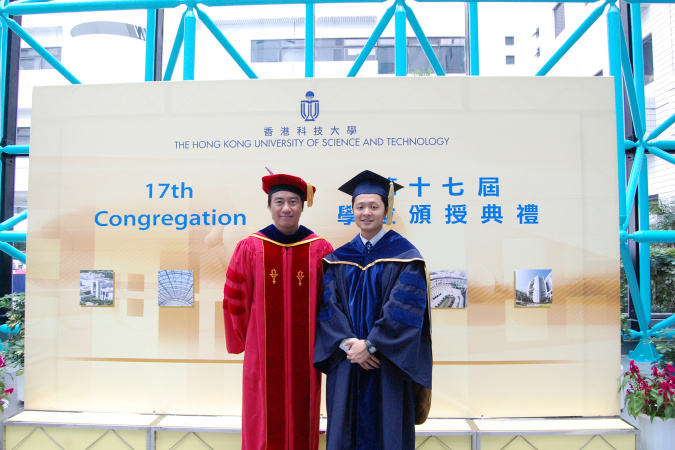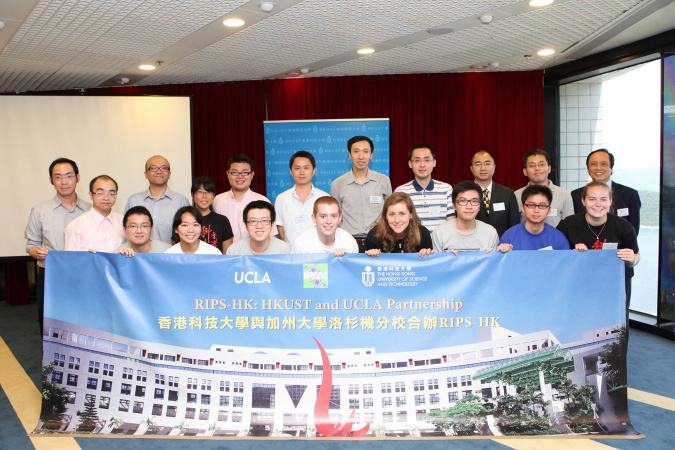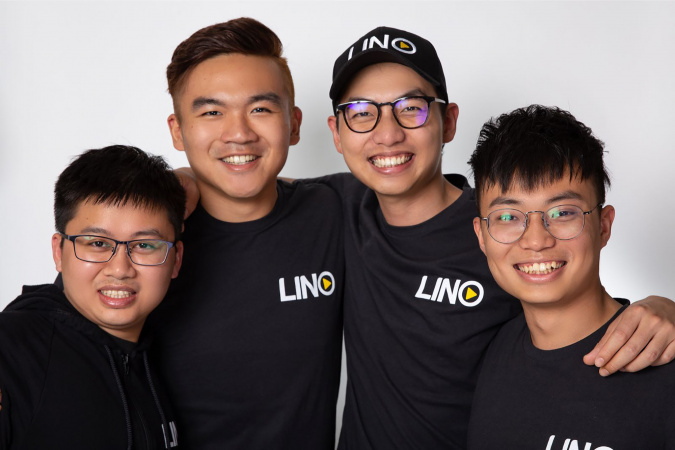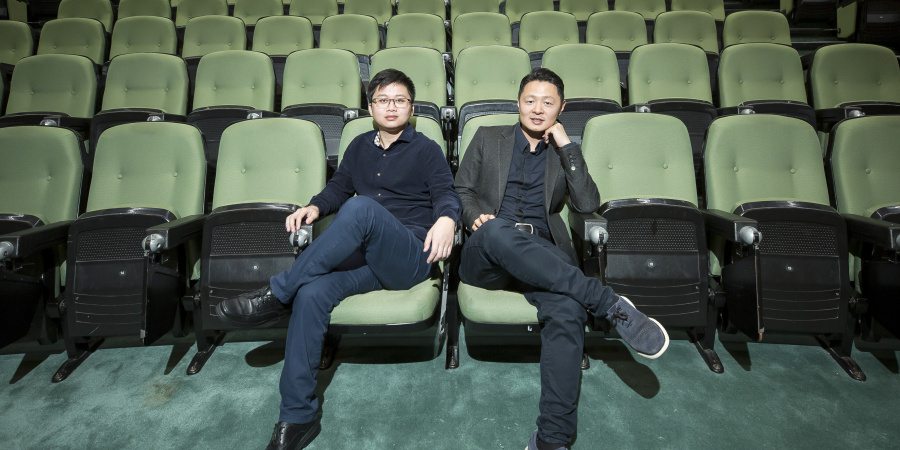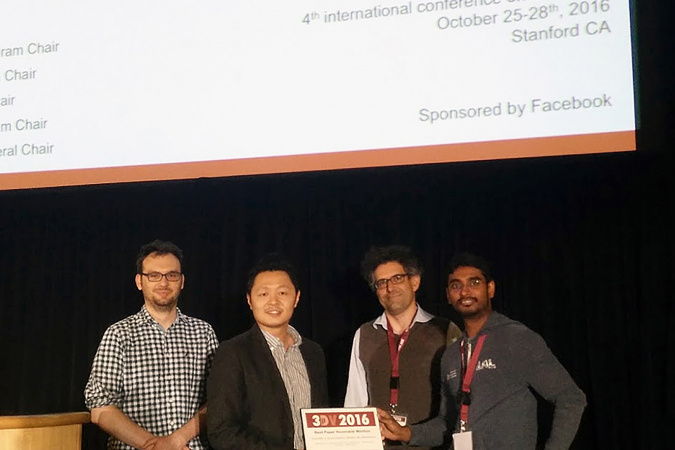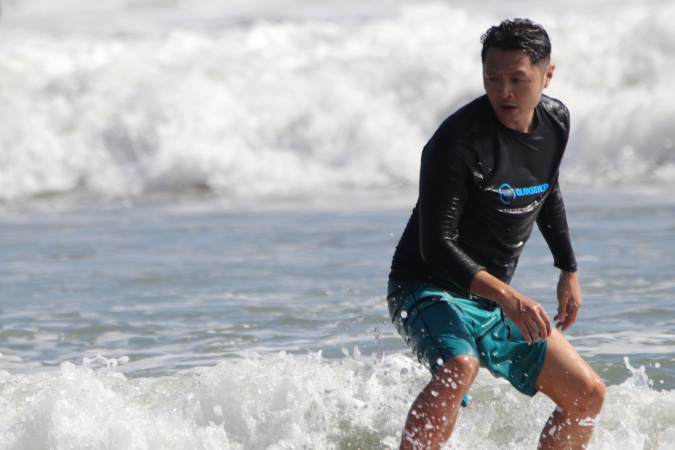Entrepreneurial Alumni Returning to Their Roots to Champion Engineering Solutions
Walking through the HKUST campus, alumni Associate Professor YEUNG Sai-Kit and Assistant Professor CHEN Qifeng are almost indistinguishable from the students surrounding them. Both scholars returned to their alma mater and joined the School of Engineering (SENG) in 2018. In addition to being passionate about teaching and research, both are of an entrepreneurial bent and have founded innovative start-ups.
Imagine moving into a new home and instead of having to shift your furniture around a few times before finding the optimum arrangement, there was a computer program that could take the measurements of your furniture and generate some ideas on where to best place it? This idea was developed by Sai-Kit with another collaborator while he was a postdoctoral scholar at the University of California, Los Angeles (UCLA), in 2011. The software was featured in New Scientist and attracted a good deal of media attention.
Sai-Kit took his project to the Singapore University of Technology and Design (SUTD), where he guided his PhD students to extend the technology to shopping malls, theme parks, school campuses and even the office of the prime minister. “In the longer run, I hope we can develop an interface that will allow people who are not tech-savvy to use it,” he says.
Meanwhile, a few years ago, while working on his PhD at Stanford University, Qifeng came up with an approach to synthesize photographic images using semantic layouts. The demonstration video on YouTube attracted about 100,000 views and coverage from media outlets in the US, France and China. “Hopefully someday you can produce a video based on whatever you imagine simply by inputting text or descriptions into a computer,” he says. If developed, this technology could herald the dawn of a new art medium, making it possible for stars from the past to be cast in today’s films.
Both scholars share an interest in computer vision – the science that aims to give computers the ability to visually sense the world, just like human beings do. And having tasted success in the international arena, both decided to return home, to Hong Kong and their alma mater.
Happy homecoming
“I missed the beautiful campus here, especially our great swimming facilities. When a position opened up at the new Division of Integrative Systems and Design, I jumped at the chance,” Sai-Kit says. “Working abroad offers you the opportunity to test yourself, but contributing to the place where I was born and grew up is more meaningful.”
Qifeng went to Stanford University for a PhD after he finished his Bachelor’s in Computer Science and Mathematics at HKUST in 2012. “HKUST has a strong research base that I am familiar with. Also, the development of the Greater Bay Area will offer tremendous opportunities” he says, explaining his decision to return to Hong Kong. But there’s another important reason: “My baby had just been born and my family is in Hong Kong. I want to be with them.”
Why did they choose HKUST as undergraduates in the first place? Qifeng, who grew up in the Guangdong province, says he had been interested in using programming to solve problems from a young age. “When a friend who attended HKUST introduced the university to me, I fell in love with it. Even though Tsinghua University offered me a place as early as Secondary Three, I decided to come to HKUST instead,” he says.
Sai-Kit had his first taste of SENG at a four-day summer camp when he was in secondary school. “My family expected me to study medicine, but I liked computer engineering because it would equip me with the skills I needed to achieve something great in the future.”
Their experience at the university convinced them that they had made the right choice. “I had very good mentors here, who gave me solid training, helped me to develop collaborative thinking and to build my mental strength,” says Sai-Kit, expressing his gratitude particularly to Professor SHI Pengcheng, Professor TANG Chi-Keung (CK Tang) and former president Professor Tony F. CHAN. Qifeng says Professor CK Tang also offered a great deal of guidance on his research projects. “The research environment is very strong here. After I participated in the Undergraduate Research Opportunities Program, one of my research papers was published in the proceedings of the IEEE Conference on Computer Vision and Pattern Recognition (CVPR), a rare and precious opportunity for an undergraduate student.”
Sai-Kit decided to combine his Bachelor’s in Computer Engineering, which he earned in 2003, with his interest in Biology. He completed an MPhil in Bioengineering in 2005, before moving on to a PhD in Electrical and Computer Engineering to continue his research on computer vision in medical imaging. He went on to work at Massachusetts Institute of Technology (MIT) and UCLA in the US and SUTD in Singapore.
Young entrepreneurs
Both Sai-Kit and Qifeng are involved in start-ups. While he was at Stanford, Qifeng co-founded a company called Lino with three partners, offering a decentralised livestream platform using blockchain technology. Headquartered in Silicon Valley, the company raised US$20 million. “We target a global market, but so far we have performed best in Turkey,” he says.
This was not his first shot at entrepreneurship. He had earlier been involved in a start-up that focused on applying artificial intelligence (AI) to unmanned aerial vehicles. “However, there wasn’t much market demand. From that experience, I realised that the approach that is needed to conduct research is totally different from running a start-up. The former is focused on solving technical problems, while the latter requires one to identify a market need.”
Sai-Kit, who founded a start-up SKY Optimum Technology (Skyopt) to further develop the Make It Home software in Singapore, agrees that a research topic that is good enough for an academic paper may not be translatable into a commercial product. This involves using design thinking, a user-centric approach to solving problems. “While trying to commercialise the software, we faced a lot of challenges, from business modelling to technical issues, which I had never tackled as a researcher.” Now the company has a clear business model and mainly provides software solutions to clients that include the Singapore government.
Both young entrepreneurs, however, no longer play major roles in their companies so that they can focus on teaching, research and service at the university. Now they mainly offer their company’s advice and support on technical aspects.
Their hands-on experience as entrepreneurs has enriched their teaching and research. “When we want to sell a product, we need to know our audience well and highlight the key points clearly. It’s similar to what we need to do for our students,” Sai-Kit says.
Changing the world
Their passion for teaching and research is driven by their belief that engineering can change the world. “I hope my research can benefit the community as a whole, whether through establishing an innovative platform or exploring new ideas. I want to nurture students and guide them in exploring a greater variety of topics,” Qifeng says. He emphasises the knowledge and useful skills his students gain, and the real-world application of what they have learnt, rather than their grades. For example, he is leading a team of students, in collaboration with HKUST’s Library and Information Technology Services Center, to set up Facial Recognition for Library Services, one of the projects under HKUST’s Sustainable Smart Campus as a Living Lab, which was announced recently.
“HKUST students are truly smart and proactive, we can always generate some new initiatives together,” Sai-Kit says. He tells students that studying engineering offers them numerous possibilities and promising career paths. “Only two or three people can’t build a plane or a rocket, but you could invent a software or platform, that can have a big impact or even change the world.”
